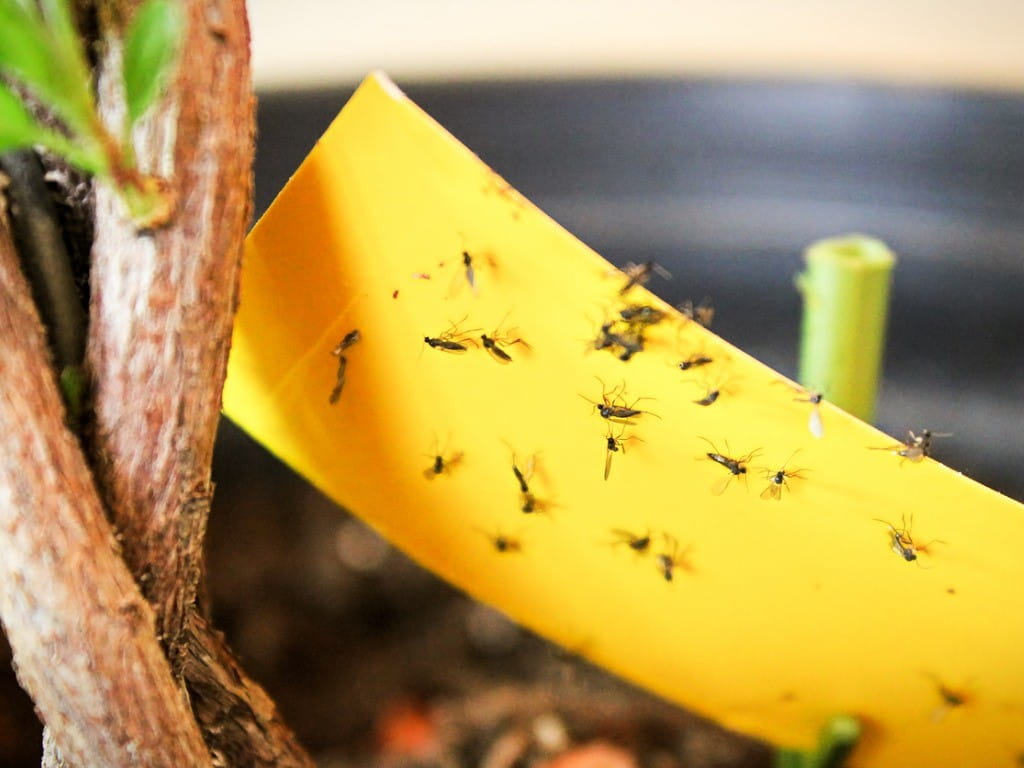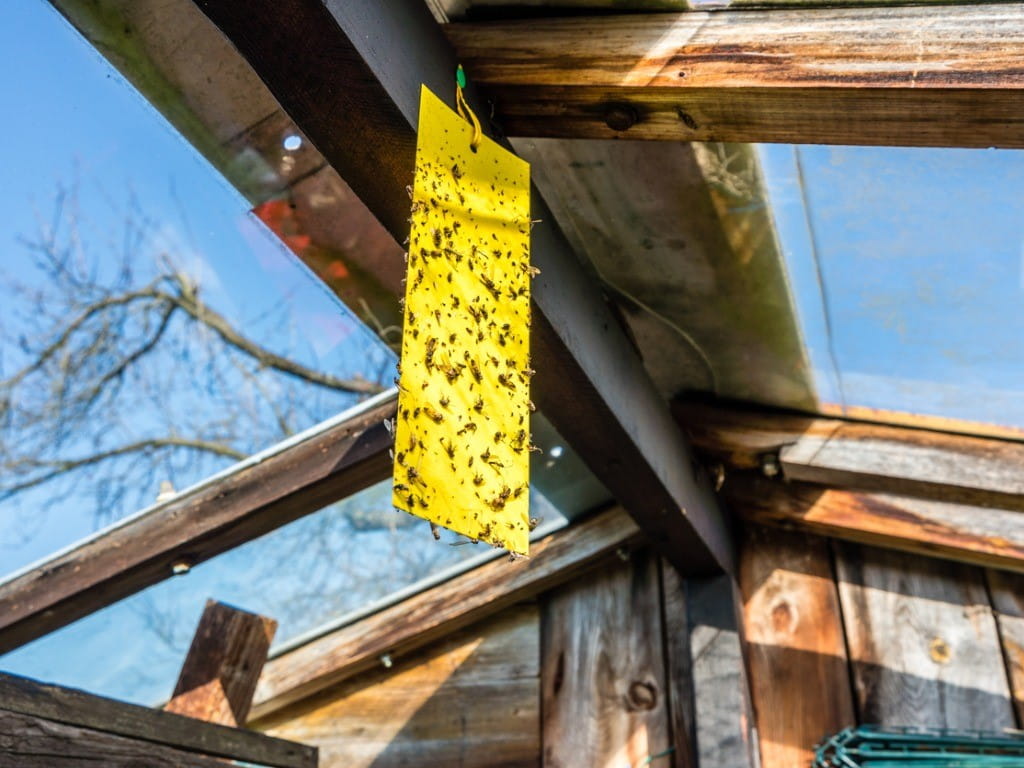Use Pest Strips As Directed!

The Bottom Line
Pest strips are typically made out of either glue on a paper backing or a porous strip impregnated with an organophosphate insecticide. Glue may stick to the skin or get in the eyes, but is unlikely to result in significant toxicity. However, exposure to organophosphates can be very toxic, causing muscle weakness, vomiting, diarrhea, seizures, and coma.

The Full Story
Pest strips such as fly ribbon, roach sticky strips, and mouse glue traps are essentially paper strips with glue on them. They typically use an attractant to lure the unsuspecting pest into the trap. The insect or rodent becomes stuck on the glue and dies over time due to exposure or starvation. Humans can also get stuck to the glue while handling the strips. It is important not to rip the sticky glue off the skin as this could cause damage by tearing the skin off with the glue. If any glue is on the skin, wash it off with water and soap for 15 minutes. Soaking the affected area in warm water and soap for 15 minutes can also help soften the glue. Sometimes applying a little vegetable oil and massaging it into the affected skin will help loosen the glue. If any glue is in the eyes, irrigate eyes thoroughly with lukewarm water for 15 minutes. If symptoms, such as pain, redness, sensitivity to light, or the sensation that there is grit in the eye, persist after initial irrigation of the eye, you should seek medical attention.
Some pest strips contain organophosphate insecticides like dichlorvos (2,2-dichlorovinyl dimethyl phosphate). Organophosphates kill insects by disrupting their central nervous systems. Unfortunately, exposure to even a small amount of organophosphates can also disrupt the central nervous systems in humans and animals causing symptoms such as muscle weakness, vomiting, diarrhea, excessive drooling, urination, tremors, seizures, and coma. The most common route of exposure is through ingestion, but it is possible to develop symptoms through inhalation and skin exposure. Symptoms can occur quickly (within minutes to hours). It is important to note that the instructions on these products say that they are designed to be used in areas occupied by people and animals for less than a few hours per day.
If you suspect someone is having symptoms from a pest strip made using either from dichlorvos or glue, check the webPOISONCONTROL® online tool for guidance or call Poison Control at 1-800-222-1222 immediately.
Diana Pei, PharmD
Certified Specialist in Poison Information
Poisoned?
Call 1-800-222-1222 or
Prevention Tips
- Keep pest strips out of the reach of children and pets.
- Use pest strips as directed by the instructions.
- Keep pest strip packaging to help identify their contents.
This Really Happened
Case 1. A 60-year-old man opened a box of glue traps using his teeth. He immediately felt a burning sensation in his mouth. Poison Control told him that glue traps are typically non-toxic and to dilute with something to drink. On a follow-up call 3 hours later, the man reported that the burning sensation went away after drinking water and that he had no other effects.
Case 2. A 4½-year-old girl licked the peanut butter bait off a glue trap. She had no symptoms prior to her grandmother calling Poison Control, which advised that the exposure shouldn’t cause any problems and to continue to treat the girl normally. During follow-up the next day, the grandmother reported that the girl did not develop any symptoms.
For More Information
What is a sticky trap? Dallas: Texas A&M AgriLife Extension Service [cited 2021 Jun 02].
References
Bock GW. Skin exposure to cyanoacrylate adhesive. Ann Emerg Med. 1984 Jun;13(6):486.
Eddleston M. Insecticides: organic phosphorus compounds and carbamates. In: Nelson LS, Howland MA, Lewin NA, Smith SW, Goldfrank LR, Hoffman RS, editors. Goldfrank’s toxicologic emergencies. 11th ed. New York: McGraw-Hill Education; 2015. p. 1486–502.
Poisoned?
Call 1-800-222-1222 or
Prevention Tips
- Keep pest strips out of the reach of children and pets.
- Use pest strips as directed by the instructions.
- Keep pest strip packaging to help identify their contents.
This Really Happened
Case 1. A 60-year-old man opened a box of glue traps using his teeth. He immediately felt a burning sensation in his mouth. Poison Control told him that glue traps are typically non-toxic and to dilute with something to drink. On a follow-up call 3 hours later, the man reported that the burning sensation went away after drinking water and that he had no other effects.
Case 2. A 4½-year-old girl licked the peanut butter bait off a glue trap. She had no symptoms prior to her grandmother calling Poison Control, which advised that the exposure shouldn’t cause any problems and to continue to treat the girl normally. During follow-up the next day, the grandmother reported that the girl did not develop any symptoms.
